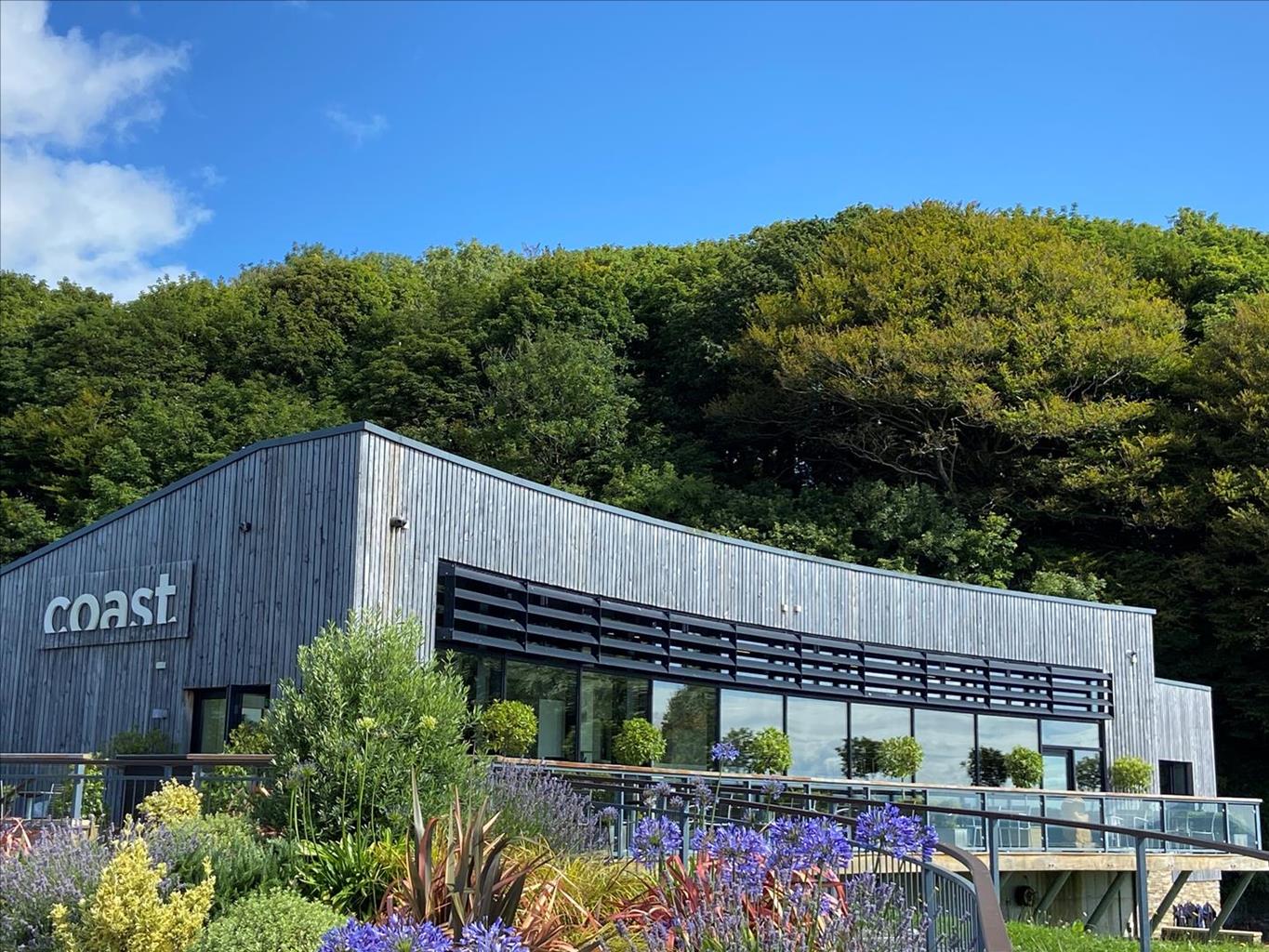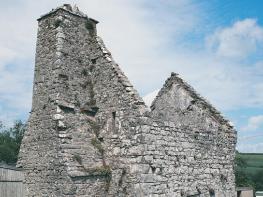Delightfully located in a peaceful valley and surrounded by an 18-hole golf course, this…
Manorbier and Swanlake Bay

A short stroll across open farmland before taking in some breathtaking coastal scenery.
5 miles (8kms)
About the walk
This is a delightful walk that runs along the heads of some magnificent cliffs and visits a wonderful and remote sandy cove. The outward leg isn’t particularly inspirational, but the narrow lane provides convenient access to the highest ground and the section across farmland is open and breezy, with fine views over the coast. Once reached, the narrow belt of white sand that makes up Swanlake Bay provides ample reward for your efforts. Flanked on both sides by impressive sandstone crags and cut off from easy road access by the farmland that you’ve just traversed, it sees few visitors and provides a stunning setting for a picnic.
Once lauded by its most famous son, Giraldus Cambrensis, alias Gerald of Wales, as the ‘pleasantest spot in Wales’. Giraldus was born Gerald de Barri, the grandson of Odo, the first Norman Lord of the Manor, in 1146. Manorbier these days is best described as an attractive but sleepy coastal village dominated by a mighty castle and set among some of south Pembrokeshire’s prettiest and most unspoilt countryside.
The village name derives from ‘Maenor of Pyrrus’ or ‘Manor of Pyr’. Pyrrus was the first Celtic abbot of Caldey, a nearby island first inhabited by monks in the 6th century ad and known in Welsh as Ynys Byr, or Pyro’s Island. Its landscape is wild and unspoilt and its buildings are inspirationally simple. There is a working Benedictine monastery and a number of ornate churches, including 12th-century St Illtyd’s, with its ancient sandstone cross.
Despite the profusion of well-preserved castles in this corner of the world, it still comes as a surprise to discover such an impressive edifice tucked away in this tiny village. The original castle stems from the late 11th century, but the stone building that stands tall and proud over the beach and village these days was constructed in the early 12th century.
The castle is privately owned, but open to the public for tours. As well as the splendid views over the bay from the top of the castle walls, you’ll also see many stately rooms, occupied these days by waxwork models of various figures, including Gerald, hard at work on his accounts.
Walk directions
Walk out of the car park entrance and turn left towards the sea. Stay on the road as it bears around to the right and climbs steeply above the coast. Pass the impressively situated and well-named Atlantic View cottage on your right before reaching a double gate on your left.
Go through the gate and walk along the field edge, with a bank and fence on your right, to reach a gate. Go through this and continue heading in the same direction to a gate close to the farm which you also pass through. Continue to a kissing gate by the farmhouse, which brings you into a small enclosure, then to another kissing gate that leads you away from the buildings.
Continue again along the edge of the field to another kissing gate. Go through and turn left to drop down the field edge to a zig-zag that leads on to the coast path. Access to the beach is more or less directly beneath you.
Turn left on to the coast path and go through a gate and steeply uphill. You’ll eventually reach the top on a lovely airy ridge that swings east and then north to drop steeply down into a narrow dip above Manorbier Bay.
Climb out of the dip to a gate and continue walking easily above the rocky beach. This path leads to a drive, beneath a large house, The Dak.
Continue beneath The Dak and uphill slightly to a gate, where the coast path drops off to the right. Follow this as it skirts a small car park and then winds down through the gorse and bracken to the beach. Cross the stream and cross the back of the beach to a set of steps that lead up to the coast path. Climb up through the bracken on a narrow path that shortly passes the impressive King’s Quoit, a Stone Age burial chamber with a 16ft (4.8m) capstone supported by two smaller stones.
With fine views over Manorbier Beach and the sandstone headland, continue up to the apex of the Priest’s Nose, another sandstone headland with a number of caves. The path now passes close to a series of deeply cloven zawns (inlets), then turns east to carve a narrow walkway across the steep hillside. The trail turns inland again to round a steep-sided valley. Climb away from this and continue back out on to the headland to reach Presipe Bay.
At a gate bearing a notice about the nearby air defence range turn left, away from the coast, to walk up the edge of the field. Continue through a gate to a waymarker pointing you right towards Hill Farm and to a point where it swings hard left. Skirt around the farm and go straight ahead to meet a surfaced drive. Turn left to pass Croft Cottage and continue to a T-junction where you bear right. Follow this to the road, by the Castlemead Hotel. Turn left to walk down the road, back to the car park.
Additional information
Coast path, clear paths across farmland
Sandy coves and dramatic coastline
Difficult stiles, poop scoop on beaches; keep on lead and off grass near house on The Dak
OS Explorer OL36 South Pembrokeshire
Pay-and-display car park below the castle
In the car park at the start of the walk
WALKING IN SAFETY
Read our tips to look after yourself and the environment when following this walk.
Find out more
Also in the area
About the area
Discover Pembrokeshire
Wales meets the Atlantic Ocean in spectacular fashion at Pembrokeshire. Unlike the West Country, Pembrokeshire can offer the coast without the crowds, and quaint fishing villages without those huge coach parks. Volcanic eruptions and earth movements have left a tortured rocky coastline of some 160 miles, whose beauty and drama have been recognised by National Park status.
Sometimes known as ‘Little England Beyond Wales’, the county has held a fascination for English visitors ever since the first Norman warlords forced their way in 800 years ago, leaving a string of 50 fine castles in their wake. The anonymous author of The Mabinogion, an 11th-century collection of Welsh folk legends, started it all. His description of the old Celtic kingdom of Dyfed (which encompasses Cardiganshire, Carmarthenshire and Pembrokeshire) as ‘the land of magic and enchantment’ was perhaps the earliest written attempt to sum up the outstanding natural beauty of this wonderful westernmost outpost of Wales. This is a county where you can take it easy on the sandy beaches, make sport out of those Atlantic waves, or discover the mysteries of St David’s or the ancient Preseli Hills.
Nearby stays
Restaurants and Pubs
Nearby experiences
Recommended things to do
Why choose Rated Trips?
Your trusted guide to rated places across the UK
The best coverage
Discover more than 15,000 professionally rated places to stay, eat and visit from across the UK and Ireland.
Quality assured
Choose a place to stay safe in the knowledge that it has been expertly assessed by trained assessors.
Plan your next trip
Search by location or the type of place you're visiting to find your next ideal holiday experience.
Travel inspiration
Read our articles, city guides and recommended things to do for inspiration. We're here to help you explore the UK.














